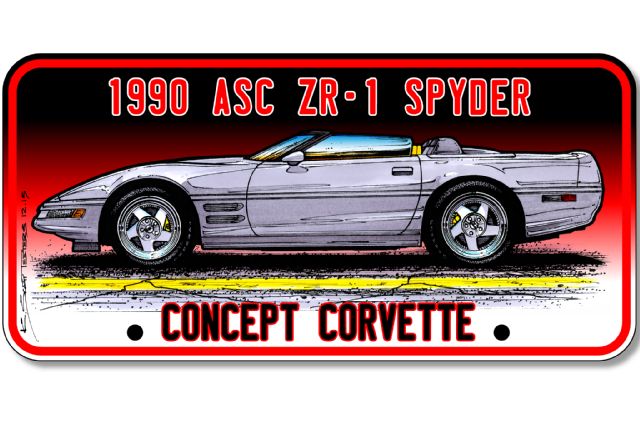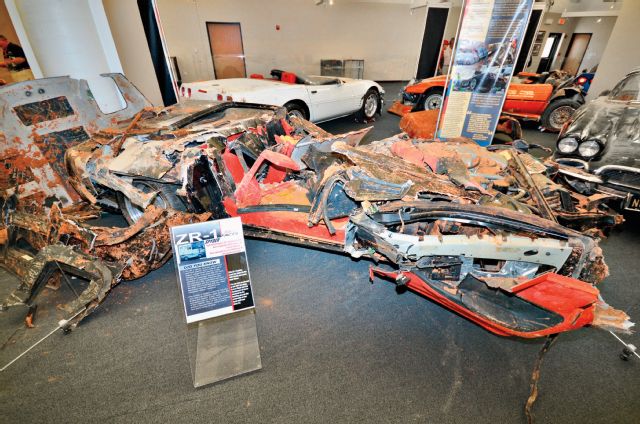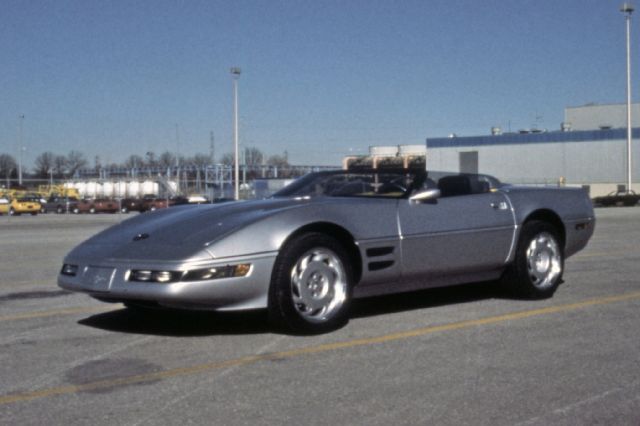
by K. Scott Teeters, Written for Vette Magazine as republished from SuperChevy.com
Excerpted from: Trend Setting Part 15: A look back at Chevrolet’s experimental, prototype, concept car, and show car Corvettes
Dateline 01.22.16: Corvette product planners spend a lot of time playing “What if?” But at least 80 percent or more of what they come up with never goes into production.
By 1988-1989 it was no secret that Chevy was about to unleash the ZR-1 super-Vette, powered by an exotic, all-aluminum, double overhead-cam engine with 130 hp more than the 245hp L98 standard Corvette engine. The car was so altered by the installation of the LT5 engine that the option price ballooned to $27,016 on top of the $31,979 base price, making the ZR-1—at the time—the most expensive Corvette ever offered.
So, it made perfect sense for the Corvette product planners to ask the question, “What else could we do with the ZR-1?” The convertible was reintroduced into the line in 1986 with ASC, (American Sunroof Corporation) winning the contract to build the convertibles in a new plant, three miles from the Bowling Green Corvette plant. ASC had been making sunroof, T-top and convertibles for all the major Detroit car companies since late 1963. So it wasn’t a stretch when ASC submitted a concept sketch to the Corvette group, showing a speedster version of the upcoming ZR-1, they called “ZR-1 Spyder.”
With help from Chevrolet, ASC built a killer concept car that in retrospect is a shame wasn’t applied to the lesser expensive base convertible model. The ZR-1 was already Chevrolet’s new hyper-expensive halo car, so a speedster version, regardless of how cool it was, would have cost even more than the almost $60,000 1990 ZR-1. “Cost reality” aside, let’s take a look at what ASC came up with.
The engine, drivetrain, suspension and structure was stock ZR-1. While the concept art depicted a cut-down windscreen, similar to the 1963 Grand Sport Roadsters, practicality demanded that a real A-pillar and windshield frame be employed. Besides, the convertible top has to be able to latch onto something.
The windshield was half the height of a stock Corvette convertible windshield. A waterfall trunk lid blended the rear deck down the middle of the seats (like a C1), and blended into the center console. Behind each headrest was a slight bump with a hoop that simulated a rollbar enclosure. The front fender vents were two horizontal openings and the hood had small vents close to the base of the windshield. Wheels were custom billet five-spoke design, shod with wide ZR-1 tires, and the side mirrors were moved in closer to the car. The interior was trimmed in bright yellow leather on the seats, door panels, dash, and shifter boot. To keep the occupants from getting their heads hammered by the wind, the seats were lowered by mounting them directly to the floorboard. Painted bright silver, the yellow interior/silver exterior was a, “love it, or hate it” kind of thing. The fold-up convertible top was reminiscent of the Porsche 356 Speedster.
It was a very cool-looking concept car. Advanced Engineering Chief Don Runkle liked the car so much he had ASC build six Spyders for evaluation, but without the chopped top. The first Spyder made its debut on January 12, 1991, and sported a unique VIN number that started with “DK” for Don Runkle. The privileged few that got to drive the car reported that the car had minimal cowl shake and was very pleasant to drive. At one point the Spyder was fitted with a removable hardtop. Corvettes are already low cars, so with the lowered seats and a fixed roof, the closed up Spyder must have been “tight.”
Often with concept cars, designers aim extra high, knowing that the design will have to be pulled in. ASC built a more realistic version using a stock LT1 convertible that used the waterfall trunk lid with the bumps behind the headrests. It’s too bad the design wasn’t integrated into the C4 convertible. But this did not go unnoticed by C5 stylists, as that is exactly what’s been used for the C5, C6 and C7 convertibles, including the bumps.
The Spyder worked the show car circuit for a few years before returning to Bowling Green for a paint and interior makeover. The exterior was painted sapphire black and the interior trimmed in torch red leather. The original was “bright and happy-looking,” the refreshed version was “sinister and hot.” In 2006 General Motors loaned the car to the National Corvette Museum where thousands of fans enjoyed the car until that fateful morning of February 12, 2014, when of all places to be in the world, the ZR-1 Spyder was sitting above a sinkhole that opened up and consumed eight unique Corvettes. Of the eight cars that went into the hold, only three were able to be restored; the ZR-1 Spyder was too far gone. The five cars that were deemed beyond repair are now part of the museum’s permanent display.
The assembly plant repainted the Spyder black and added a Torch Red interior. The ZR-1 engine remained stock. This is all that remains of that once beautiful and unique ZR-1. The crew had difficulty locating the areas that were secure enough to withstand the stress of the lift. It was successfully raised on April 1, 2014.

The photo above is how the ZR-1 Spyder looked with it arrived at the Bowling Green assembly plant to be refurbished. Notice some of the discarded body parts in the background.

